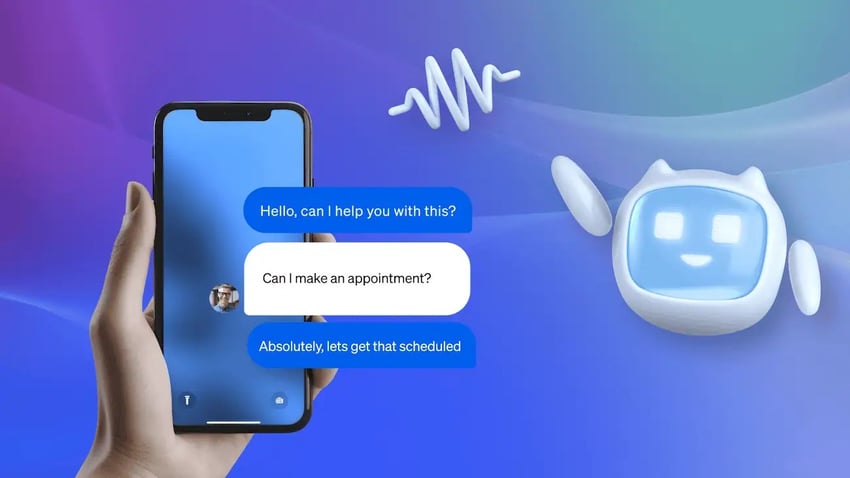In a world of evolving customer demands and competition around every corner, getting the contact center customer experience (CX) right must be top of mind for your business.
It’s the first point of contact — and often the only point of contact — for your customers, so there is nothing more crucial than mapping, measuring, and constantly improving the experience they receive when reaching out to your business.
In this guide, we detail the metrics you should be tracking, customers’ base-level expectations (these have changed in recent times), and how to continue to provide high-quality experiences as your company matures.
What Contact Center Customer Experience Means
What exactly does a great customer experience in your contact center entail?
Includes every customer touchpoint
In your customer experience program, you must cater to every channel your customers want to use. For some businesses, this might mean introducing new, previously unsupported channels.
Phone, email, chat, SMS, social media, and self-service all affect the customer’s perception of your brand. Each channel may come with expectations around time to answer and clarity of guidance. However, customers just want their queries resolved efficiently. You must ensure each touchpoint provides a consistent brand experience for your customers, regardless of how they contact you.
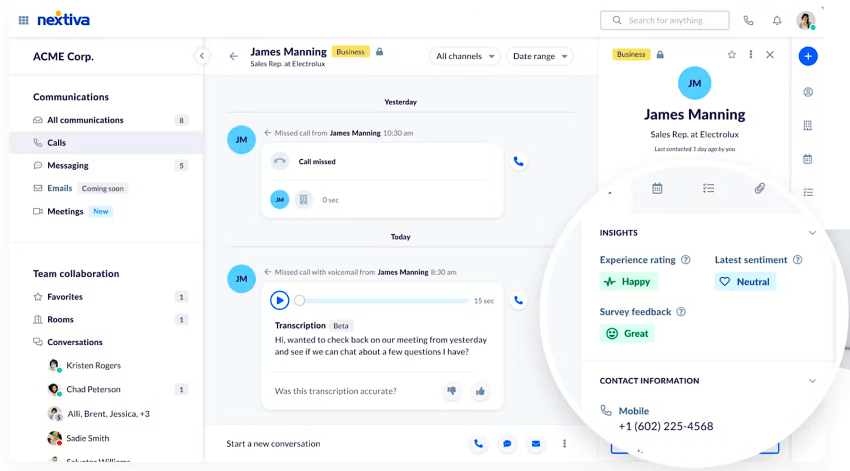
Spans the full journey
The contact center customer experience doesn’t just include customer support inquiries.
Any touchpoint includes a service moment that has the potential to make or break customer loyalty:
- Discovery questions
- Onboarding
- Adoption
- Renewals
- Customer advocacy
No matter how old, new, high-spending, or loyal your customer is, you must present a consistent brand experience every time you interact with them.
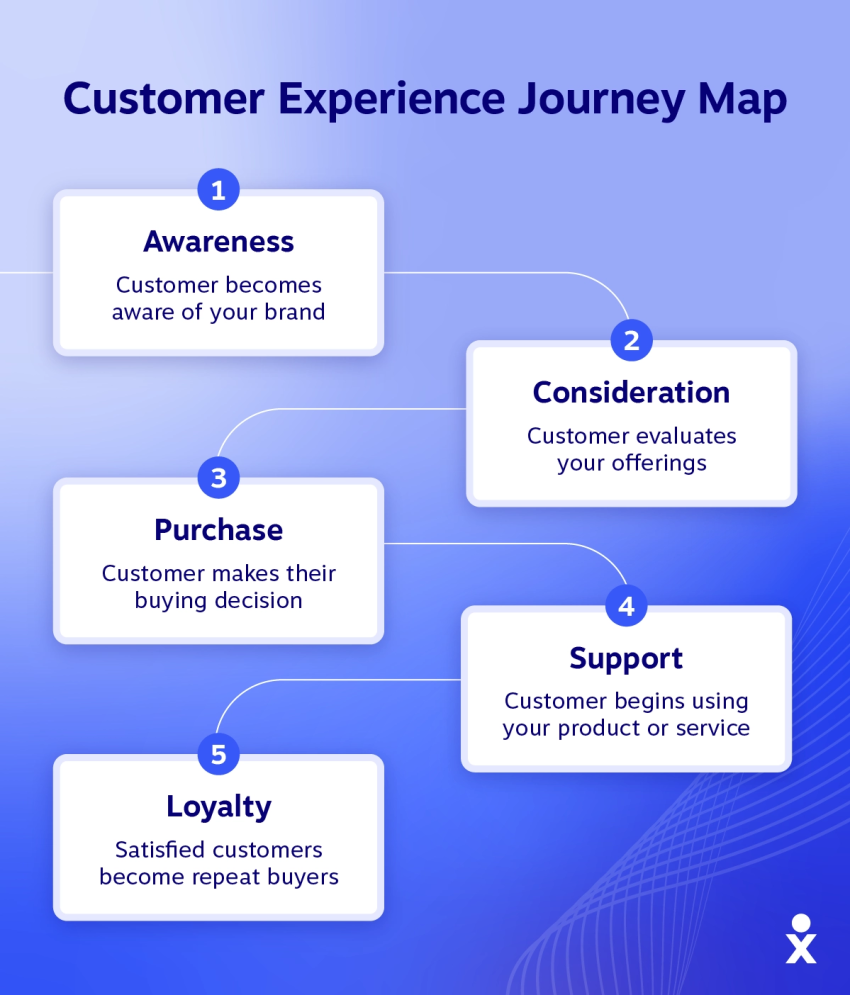
Measured by outcomes
When it comes to customer experience management, it pays to take a view of what happened during the interaction and how that impacted the outcome.
When assessing your contact center customer experience, prioritize these areas:
- Resolution quality
- Required effort
- Revenue impact
- Customer sentiment
These will guide whether your experience is performing as desired or whether it’s a pipe dream.
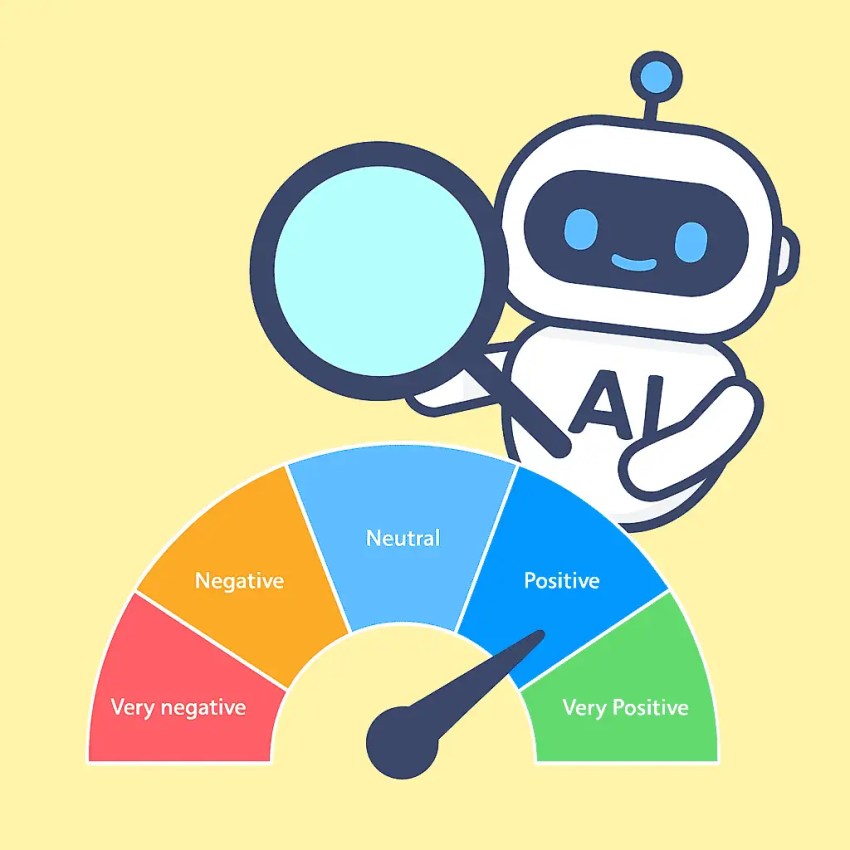
Customer Experience Metrics That Matter (and How to Move Them)
With a wealth of key performance indicators to choose from, it’s easy to get bogged down in the details. While there are use cases for most contact center metrics, here’s what moves the needle when you focus on contact center customer experience.
| Metric | What It Shows | How to Improve | What to Watch |
|---|---|---|---|
| First Contact Resolution (FCR) | Ability to solve the need within a single interaction. | Create decision paths and reply macros for top intents. Connect CRM, billing, and order customer data to the agent desktop. Trigger automated follow-ups like replacements or credits. Empower policy exceptions with tiered approvals. | Reopen rate by channel and transfer rate by queue. |
| Customer Effort Score (CES) | Ease of getting help across channels. | Shorten menus with natural language intake. Keep context between bot, chat, and phone calls so customers never repeat themselves. Offer queue callbacks and transparent wait times during peaks. | Authentication steps per interaction and channel switching rate. |
| Customer Satisfaction (CSAT) and Quality Score | Satisfaction and adherence to standards. | Calibrate QA categories monthly. Use artificial intelligence (AI) suggestions in scorecards for consistency. Coach with side-by-side call review and micro-lessons. | CSAT by intent and agent tenure. QA variance across evaluators. |
| Average Handle Time (AHT) and Average Speed of Answer | Efficiency and accessibility. | Prefill forms from CRM to reduce wrap time. Use guided workflows and next best actions to prevent drift. Pool call center agents with skills-based routing. | Abandon rate at each queue depth and self-service containment. |
| Customer Retention Expansion and Revenue Impact | CX as a growth lever beyond cost control. | Capture risk signals and trigger save plays. Equip agents with contextual offers tied to resolved issues. Close the loop with success teams on key accounts. | Churn correlated with support intensity and upsell rate from service chats. |
The Omnichannel Contact Center Experience Customers Expect
Especially in the case of enterprise contact centers, omnichannel has become table stakes when it comes to servicing your customers. They want to contact you on the channel that suits them best.
Principles of true omnichannel
Omnichannel, not to be mistaken with multichannel, delivers a single customer record that travels with the conversation across channels.
Your customers’ channel choice is honored without loss of context. This means any agent on any channel gets access to previous interaction history and is aware of what’s happened so far.
Likewise, at the end of the interaction, reporting spans all channels and stages of the journey. There’s no need to match up call records and hunt for emails and web chats.
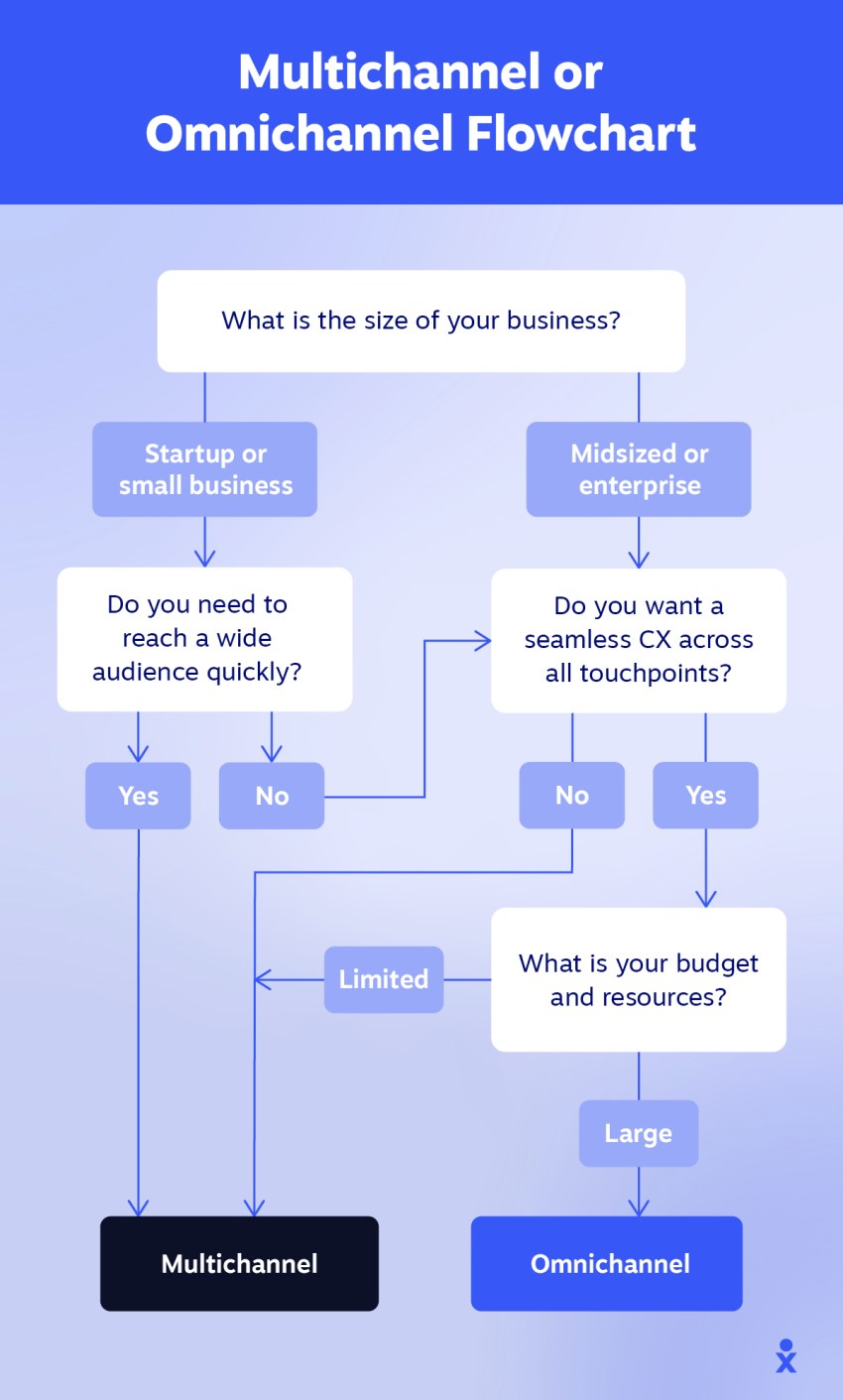
Omnichannel operating model
When creating your omnichannel model, split it into four stages and optimize individually. After all, the sum of the parts is often greater than the whole.
1. Intake and triage
When customers make contact, ensure a central queue with intent detection, priority rules, and skills-based routing. You may introduce self-service to reduce the burden on real-time agent effort and speed up the time to resolution for simpler queries.
2. Knowledge everywhere
Create a shared knowledge base for bots and agents. The ability to easily look up information (manually or via AI Agent Assist) and access email templates and post-interaction follow-ups means less time searching and more time helping customers.
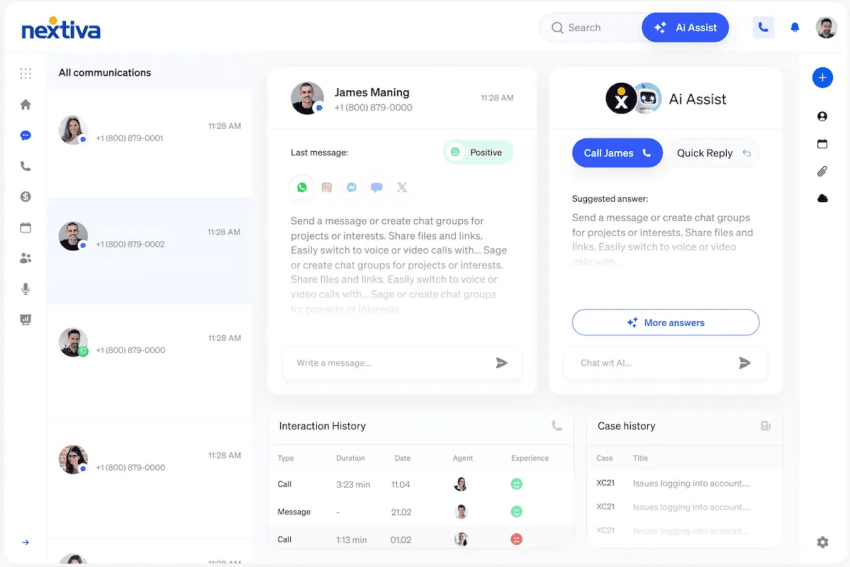
3. Playbooks per intent
Knowing the expected outcomes and how to respond to specific queries empowers agents and ensures consistency.
If you document standard answers, data lookups, workflow steps, and escalation paths for your top 20 or so intents, you can map the customer journey and plan how customer interactions should play out.
4. Governance
Pro Tip: Your operating model can’t become set and forget. Introduce (and commit to) a monthly channel health review to ensure optimal performance and consistency in your key metrics.
Consider tracking backlog burn down, and make informed roadmap decisions based on effort, volume, and experience ratings.
Channel design tips
Your enterprise contact center solution will come with voice, chat, email, and social as standard. Here’s how to streamline each channel without overcomplicating things.
| Channel | Design Tips | Rationale |
|---|---|---|
| Voice | Keep menus short | IVR menus should have no more than three to five options and allow quick access to a live agent if needed. |
| Offer queue callbacks | Reduce frustration by offering customers the option to receive a callback instead of waiting on hold. | |
| Provide clear wait time guidance | Announce estimated wait times or caller position in queue to set expectations and decrease abandonment. | |
| Chat & Messaging | Suggest quick replies | Use preset reply options or conversational AI to help customers phrase queries quickly and accurately. |
| Support file upload and mobile-friendly forms | Allow customers to share screenshots, images, or documents to speed up resolution, and ensure chat flows adapt to mobile layouts. | |
| Integrate chatbots for common queries | Offload repetitive FAQs to AI chatbots while ensuring seamless handoff to human agents for complex customer issues. | |
| Set expectations with SLAs | Inform customers of expected response times (e.g., “We’ll reply within 24 hours”) to build confidence and avoid repeat queries. | |
| Auto acknowledgements with self-help links | Immediately confirm receipt of emails and include relevant self-service resources to let customers solve issues faster. | |
| Use templates for consistent responses | Ensure tone, format, and compliance standards are consistent while also allowing personalization. | |
| Social & Reviews | Escalate sensitive threads to private channels | Avoid public disputes by moving conversations to direct messages or support channels quickly. |
| Auto-log everything in your CRM | Capture social interactions and reviews in your CRM to ensure a complete customer history for support and follow-up. | |
| Monitor sentiment and brand mentions | Use social listening software to catch negative signals early and identify opportunities to engage with positive advocates. |
Self-Service and Automation That Customers Actually Use
As we talk about self-service and automating customer processes, it can feel like we’re removing the human element from customer experience. However, when they’re implemented well, you speed up the contact center customer experience and free up agents to spend more time on empathetic and technical scenarios.
Keep these three pillars in mind when introducing self-service into your organization.
1. Build for top intents first
Identify your top 20 intents by volume and cost. Many businesses find these are routine inquiries that can be outsourced to some form of automation or self-service.
Create flows for password resets, order status updates, appointment changes, simple returns, and basic troubleshooting.
These contact center automations take relatively little time to set up and provide an immediate return on your investment. Customers get quick replies for basic items, and agents don’t get bogged down repeating themselves all day.

2. Design for clarity and escape hatches
When introducing self-service, do everything in your power to avoid scaring customers from using it. Here’s how:
- Use plain language
- Use progress indicators
- Confirm selections
- Always provide a clear path to a human
- Pass the full context to those humans so customers never repeat information
3. Keep content fresh
In self-serve documentation, assign owners for articles and review dates. It becomes their responsibility to ensure their department’s content is always up to date. The last outcome you want is deflecting a customer to self-service, only for them to discover the document is outdated and they need to call and join the queue again.
Use search analytics to discover what gets viewed the most, and make that content comprehensive. Add short videos or annotated screenshots for high-friction topics to make this knowledge base as informative as possible.
Tactical Playbook by Maturity Stage
When you put customer experience ahead of everything else, you start to reap rewards in the form of loyalty, repeat revenue, and increased brand reputation.
At an early stage, there are some quick wins to ramp up the experience. But you shouldn’t stop there. Here are the three key stages of contact center maturity and what you can do to embrace continuous optimization.
Crawl: quick wins
- Turn on queue callbacks and deflection to top knowledge articles.
- Launch customer feedback micro-surveys after each interaction.
- Add intent-based routing for the top three categories.
Walk: scale and stabilize
- Deploy skills-based routing across queues.
- Standardize QA with AI-assisted scoring and monthly calibration.
- Connect CCaaS with CRM and billing to remove swivel work.
Run: optimize and personalize
- Add predictive staffing and dynamic SLAs by tier.
- Roll out personalized recommendations in service chats.
- Use journey analytics to repair handoffs between self-service and agents.
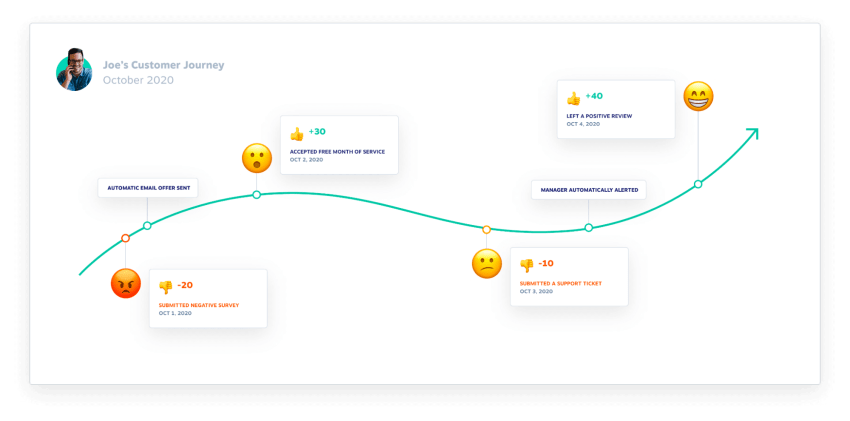
Governance and Analytics Cadence
So, you’ve planned your metrics and designed your channels, and you appreciate the need for ongoing optimization. The next question is: How often do you check in with specific areas and measures?
Use the table below to extract what you need to focus on — and when.
| Governance & Analytics Cadence | Key Metrics & Focus Areas |
|---|---|
| Weekly | – Volume by intent – Handle time outliers – Aged backlog – Top five failure reasons from QA – Reopen analysis |
| Monthly | – CSAT, Net Promoter Score, and effort by channel and segment – FCR trends with root-cause actions – Knowledge coverage and deflection impact |
| Quarterly | – Retention and expansion influenced by service – Cost to serve by intent and channel – Investment reallocation decisions |
Risks to Avoid and How to Mitigate Them
Here are some ways you can avoid and mitigate risks that inevitably arise when building the customer experience in your contact center:
Optimizing for speed over resolution
When you’re optimizing your customer experience program, it’s easy to fall into the trap of fast = efficient.
Instead, you must balance AHT with FCR and CSAT in scorecards. Move from trying to get customers off the phone fast to rewarding complete fixes.
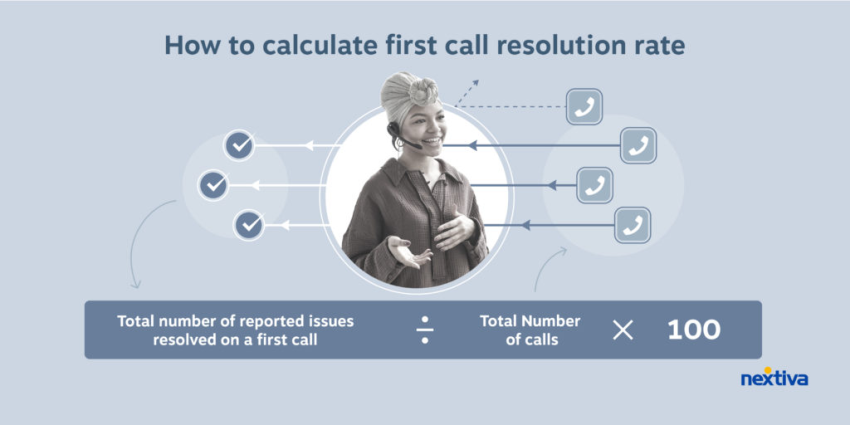
Channel silos that erase context
Mandate a unified case record. When you have a single file for all conversations and transactions, customers get better experiences, and contact center agents are more productive.
Use AI tools like auto sync, transcripts, and automated post-call notes to create a consistent customer record.
When reviewing after the fact, use a single analytics layer across channels to get a complete view of the customer experience.
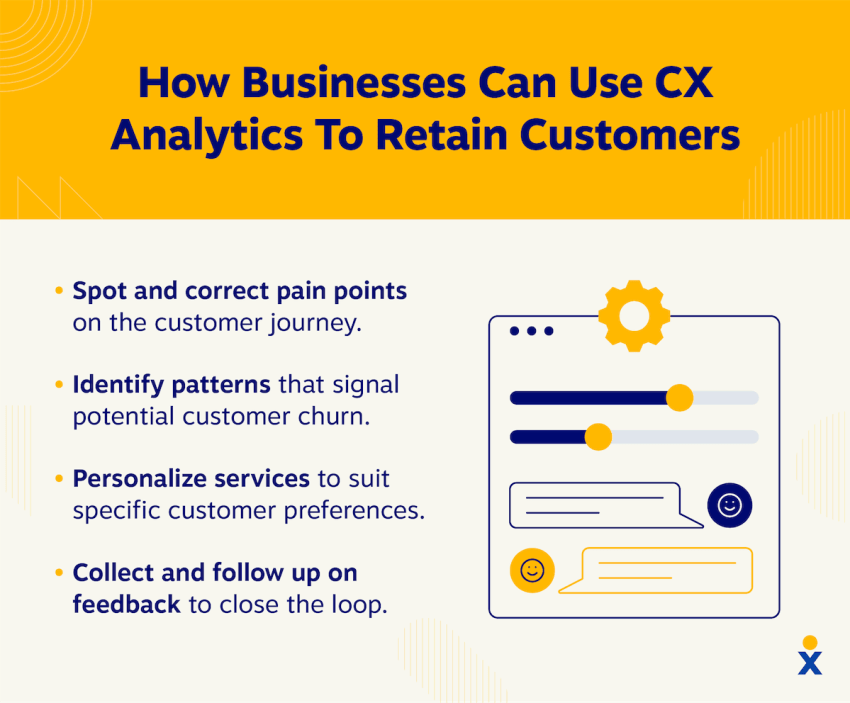
Underfunded knowledge
Give article ownership to subject experts. They may delegate updates and document creation, but they must have final sign-off before documentation gets released into the wild.
When creating such assets, allocate agent time for authoring and training. Allowing them to take time away from their desk means you have frontline resources (those with the most know-how) creating documentation. Lean on their experiences to ensure what gets created reflects reality.
Pro Tip: Some businesses even tie article quality to quality assurance and agent performance evaluations.
Nextiva: Your Contact Center CX Partner
Customer experience (cx) in the contact center is a system of people, processes, and data guided by clear metrics. The way you approach this reflects the outcomes your customers receive.
Quality in = quality out.
When planning your contact center cx, design for true omnichannel with a single record of truth and consistent playbooks. Next, invest in agent experience, knowledge, and coaching to raise quality. Throughout, govern with a steady analytics cadence so improvements compound.
The technology you have at your disposal makes this easier to design and maintain, too.
With Nextiva, teams turn this playbook into daily practice and create experiences that delight customers, energize agents, and drive durable growth.
Not only do you get omnichannel support with customer-focused analytics, you also benefit from:
- Sentiment analysis
- Post-call automation
- Intent-based routing
- Self-service workflows
- AI quality management
“We have been using Nextiva for a couple of months now, and we are already seeing the difference. Our ORM team can respond to customers across different channels from one single dashboard using the omnichannel Unibox, resulting in quicker resolutions.”
~ DAMAC Properties
To ensure their customer experience processes are backed by the right technology, businesses like Tata Play, Snap Marketing, and DAMAC choose Nextiva as their backbone.
Check out Nextiva’s AI-powered Contact Center solution here.
Top Ranked AI-Powered Contact Center Solution
Transform your customer interactions with a contact center platform that saves you time and money, reduces agent and supervisor stress, and flexibly adapts to fit your needs.

















 Customer Experience
Customer Experience 









